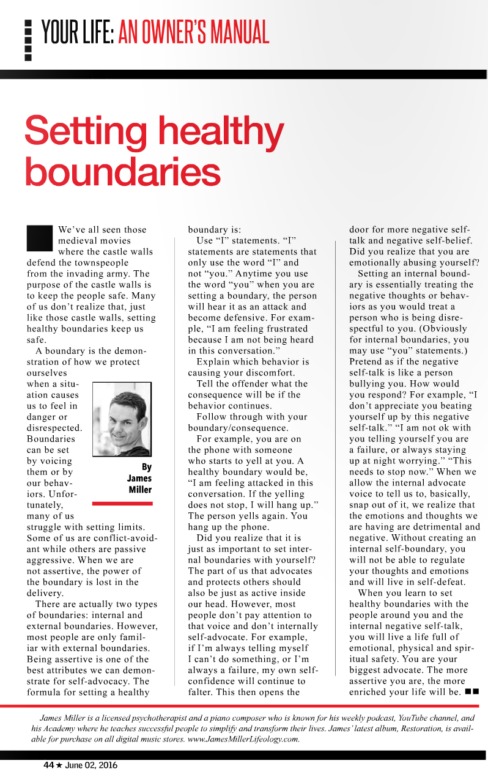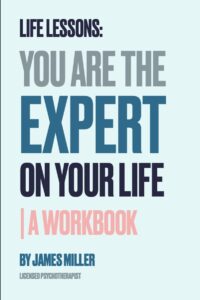We’ve all seen those old movies where the castle walls defend the townspeople from the invading army. The purpose of the castle walls is to keep the people safe. Many of us don’t realize that, just like those castle walls, setting healthy boundaries also keeps us safe.
A boundary is an example of how we protect ourselves when a situation causes us to feel in danger or disrespected. A boundary can be set by speaking it or by our behaviors. Unfortunately, many of us struggle with setting boundaries or limits. Some of us are conflict-avoidant, while others are passive-aggressive. When we are not assertive, the power of the boundary is lost in the delivery.
There are two types of boundaries: internal and external boundaries. However, most people are only familiar with external boundaries. Being assertive is one of the best attributes we can demonstrate for self-advocacy. This is the formula for setting a healthy limit.
- Use “I” statements. “I” statements are statements that only use the word “I” and not “you.” Anytime you use the word “you” when you are setting a boundary, the person will hear it as an attack and become defensive. For example, “I am feeling frustrated because I am not being heard in this conversation.” Versus, I am feeling frustrated because you aren’t listening to me.
- Explain which of their behaviors is causing you discomfort.
- Tell the offender what the consequence will be if the behavior continues.
- Follow through with your boundary or consequence. (Be sure that you can enforce and follow through with your limit, or rethink it.)
For example, you are on the phone with someone who starts to yell at you. A healthy boundary would be, “I am feeling attacked in this conversation. If the yelling does not stop, I will hang up.” The person yells again. You hang up the phone.
Did you know it is just as important to set internal boundaries with yourself? That part of us that advocates and protects other people who we see victimized should also be just as active inside our head. However, most people don’t pay attention to that voice and don’t internally self-advocate. For example, if I’m always telling myself I can’t do something, or I’m still a failure, my self-confidence will continue to falter. This then opens the door for more negative self-talk and negative self-beliefs. Did you realize that you are emotionally abusing yourself? Essentially being your own bully.
Setting an internal boundary is basically treating the negative thoughts or behaviors as you would treat a person who is being disrespectful to you. (Obviously, for internal boundaries you may use “you” statements.) Pretend as if the negative self-talk is like a person bullying you. How would you respond? For example, “I don’t appreciate you beating yourself up by this negative self-talk.” “I am not ok with you telling yourself you are always a failure, or always staying up at night worrying.” “This needs to stop now.”
When we allow the internal advocate voice to tell us to, basically, snap out of it, we realize that the emotions and thoughts we are having are detrimental and harmful. Without creating an internal self-boundary, you will not be able to regulate your thoughts and feelings. You will then live in self-defeat.
When you learn to set healthy boundaries with the people around you and the internal negative self-talk, you will live a life full of emotional, physical, and spiritual safety. You are your biggest advocate. The more assertive you are, the more enriched your life will be.
James Miller is a licensed psychotherapist and the executive producer and host of the nationally broadcast and syndicated radio show James Miller | LIFEOLOGY®. .www.JamesMillerLIFEOLOGY.com.
#boundaries #healthy #relationships #communication #safety #dating #assertive


 We all get overwhelmed and sometimes don’t know what to do. LIFE LESSONS is your new “go-to” book to help you navigate life.
We all get overwhelmed and sometimes don’t know what to do. LIFE LESSONS is your new “go-to” book to help you navigate life.